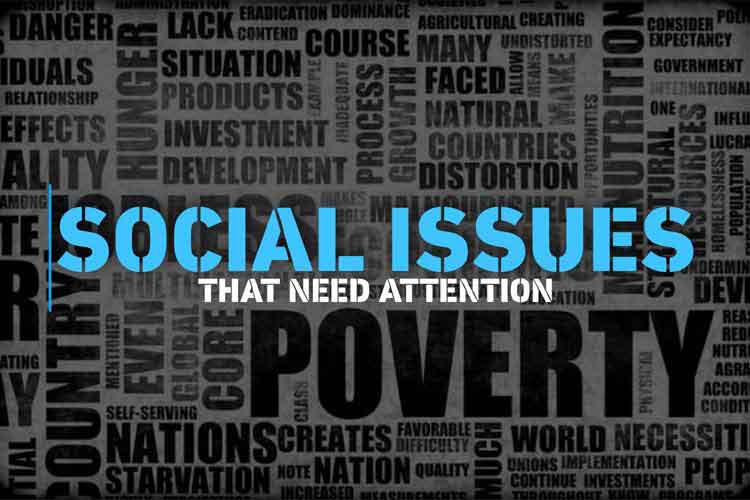Introduction
We aim to understand how the LGBT community emerged from ancient times and eventually became a modern ethos followed, embraced, and embarked upon today. It is imperative to first understand the origin and emergence of this community, significant terms associated with it and then move on to how different geographical terrains enjoyed it in history. Multiple nations along with their respective religions and cultural values will be analyzed for a closer look at the formation of this community. Eventually, we will move on to the modern times in 21st century where LGBT has become a commonly known phenomenon. We want to know its current state and acceptance level today and what it was in ancient times.
Origin and Emergence of LGBT
What is LGBT?
LGBT can be defined as an acronym representing people belonging to unique sexual identities, distinctive from commonly known binaries.
When did it Begin?
The initial mention or act of homosexuality cannot be pinned to one date, however, mentions of homosexuality date to ancient times. Homosexual relationships included both men, women, transgender, and bisexuals at that time as well. Artworks including paintings, miniature sketches, and literature including poems and prose have included references of homosexuality for as long as we can find.
Emerging LGBT Community
Over time, the LGBT community has become more prominent and distinct. It comes with multiple interpretations and the people’s needs to identify themselves among gender binaries. First official records of homosexuality present the story of Lot – a prophet of Islamic and Biblical history. It was considered derogatory at the time and believed to have been eliminated by God. However, the phenomenon existed and survived over time and was recorded during Hitler’s time as well. Later on, Asia, Europe and now Americas revealed ancient literature and artworks containing references to homosexual relationships between men and women.
Important Terms and Associations
The Acronym
To understand the LGBT community, we must first consider all terms and their meanings used commonly. LGBT is the acronym for lesbian, gay, bisexual, and transgender. The initials commonly represent all the people belonging to this community however, recently the term has advanced and become LGBTQ+. In this variation, Q represents the queer or questioning – those who are unsure and are still exploring their gender identities. + represents those with two spirits of sexuality; meaning they may be attracted to both men and women at different times.
The Homosexual
“Homosexual” was coined by a Hungarian doctor Karoly Maria in 1869. The term referred to both men and women attracted to same sexes. It was not readily adopted as the word “sexual” did not seem appropriate to be used globally. Both gay and lesbian were relatively newer terms and coined around the 1960s. They became popular as they did not seem explicit for public mention, unlike homosexual.
The Transition
“Coming out” or “come out from the closet” are phrases associated with someone who has recently discovered their gender identity. The identity may be different from what was assigned to them at birth, as per their biological representation. It is also a post-transition phenomenon when a person has finally transcended as the gender identity they believe to be.
The Pride
Thom Higgins was a gay activist who associated pride with the homosexuals to ensure their representation is not something to be ashamed of. During gay and lesbian movements in Minnesota in 1960s, he was responsible for coining the term. Robert A. Martin and L. Craig Schoonmaker were also bisexual and gay activists respectively, and responsible for popularizing the use of “pride” with gay and homosexuals.
The Symbols
The LGBT community has certain symbols it associates with. The first symbol is the inverted pink triangle. This symbol dates to 1970s during the reign of Hitler. Hitler banned homosexuality and arrested anyone who openly claimed to be gay or lesbian. Most of the people were arrested and some rebellious ones were sent to concentration camps to get their sexualities fixed. However, the concentration camps tortured these men and conducted medical experiments on them. Most men were sodomized using broomsticks and others castrated. To identify these men as the lowest of the social strata, Hitler pasted the pink inverted triangle on their uniforms. Instead of feeling demeaned, they carried this symbol as their identification. Later, many soldiers who became pro-homosexuality also wore the symbol as a way to show solidarity with the community.
The modern and rather recent symbol that became the official emblem of the LGBT is the rainbow flag. The flag was hand sown and designed by an artist Gilbert Baker in San Francisco. He first raised it to show how his community now had a visual representation. His flag initially had eight colors, each having a unique meaning. The colors and their meanings were pink for sex, red for life, orange for healing, yellow for sunlight, green for nature, turquoise for art, indigo for serenity, and violet for spirit. Now, the LGBT flag has six colors remaining, red, orange, yellow, green, blue and violet.
Another graphical association of the community is the form of unicorn. For decades, we have seen the mythical unicorn with a rainbow horn, mane and tail in cartoons and other works of fiction. It has always been in plain sight but never officially associated with the LGBT until recently. In 2018, the unicorn was drawn on flags and clothes of the community during their pride month.
LGBT in Different Nations
The LGBT community has gone through the global terrains of discrimination and derogation and has now become legally acceptable by over 160 countries. The following section will entail homosexuality as depicted in multiple geographical boundaries across time periods.
Sodom and the Story of Lot
As mentioned earlier, the first recorded reference of homosexuality dates to the Story of Lot, the messenger of God in Islamic and Biblical history. Lot was initially headed to Palestine to preach the word of God when he received the command to travel to Sodom and Gomorrah. Both cities were indulged in homosexuality, an act illegal and unnatural as deemed by God. Lot was sent to the people as a guide. He was to convince them to refrain from homosexuality as an accepted routine among their inhabitants. The cities had indulged in same-sex unions as well as sexual violence. It was unacceptable as per religion and culture and God forbade it. Lot, along with his family, went to Sodom to convey the necessary guidance. He said,
“What! Do you commit an outrage none in the world ever committed before you?! Indeed you come to men with desire instead of women! Indeed, you are a profligate lot.”
Despite his warnings and preaching, the people did not listen to his guidance and eventually, his wife too became indulged in homosexuality. The people ridiculed Lot and insisted he left them alone. Eventually, two angels were sent to inform Lot to leave the city with his daughters so he can escape the wrath of God that will befall the inhabitants. When Lot fled the city, God’s punishment in the form of raining stones hit the people and the cities were destroyed. It is said in the Quran,
“Then We poured down upon them a rain [of stones]. So observe how was the fate of the guilty!”
The religion of Islam and Orthodox Christianity does not accept homosexuality as a way of life as procreation is necessary in marriage for both religions.
China and Homosexuality
References to homosexuality have been found in ancient literature discovered relevant to China. Confucianism is an existing, cultural, and philosophical doctrine the people in China follow to date. It mentioned little regarding sexuality – be it heterosexuality or homosexuality. However, some mentions of lesbianism can be found in this philosophy. The three main dynasties that record instances of homosexuality include the Song, Ming and Qing dynasties.
Dating to 476 BC, some literature has been found that corroborates history of homosexuality. Han Fei was a prominent historian of the era who recorded the history of a sexual relationship between the Duke Ling of Wei and Mi Zixia. He presented their relationship symbolically by referring to the fruit peach which both shared to declare their love. Peach is commonly known as symbolic of the human buttocks, hence both men declaring inclination towards homosexuality.
Another interesting story recorded in ancient China is of Emperor Ai of Han and his lover Dongxian. Dongxian was a politician who quickly rose to fame and a position of power because of his illicit relationship with the emperor. The story featured the time when both men shared their bed and slept together but the emperor woke up to leave. His sleeve was caught under Dongxian and he cut it off as to not wake up his lover. Later, Dongxian woke up to find the sleeve under him when he woke up. The story has featured in multiple Chinese paintings, without officially declaring it is derived from the Emperor Ai and Dongxian.
In 907 AC with the emergence of Tang dynasty, the people were more influenced by the Western culture and women in power. Then, the concept of homosexuality became unnatural for them as they wanted to procreate and increase their lineage. Right after, Song dynasty was the last one to record one official chapter on the emperor having a male companion. Afterwards, the emperors were associated with heterosexuality as a means to transfer their rulership within family and sustain power.
The following Ming dynasty saw Zhengde Emperor with a male companion but at that time, homosexuality became less legitimate as compared to a family with wife and children. It was then considered a western custom that was tolerated and not fully legal anymore. With less favor of the people in power, homosexuality was then mythicized and romanticized. The folk tale of the Leveret Spirit came into existence. According to the tale, Leveret was the spirit of a deity who managed love and relationships between homosexuals on earth. Paintings and miniature art of the time refer to this deity oftentimes.
By the time of Qing dynasty, homosexuality became illegal and frowned upon. Anyone who was found to be practicing it was sent to prison for a month and punished by a hundred blows in public. Significant efforts were then made to suppress homosexuality in China when Western philosophy and science came into practice in the region.
In 1997, homosexuality was legalized once again despite being banned for most of the 20th century. A social media platform called Sina Weibo eventually started banning homosexual content in 2018 with the government’s permission. However, it led to a public outcry of the homosexuals and the platform had to reverse its policies. In 2021, numerous accounts showing homosexual content have been blocked once again. In Modern China, homosexuality is still not completely legal and accepted.
India and Homosexual Deities
India has been one of the most sexually diverse nations in the world. Even in the ancient times, its deities and saints indulged in homosexual behavior and made it a natural way of life for their followers. While India is a declared secular state, it still majorly follows Hinduism as a religion and therefore, we shall discuss homosexuality under their religion’s umbrella.
The officially accepted lifestyle doctrine, Kamasutra, in India explores homosexuality, bisexuality, pansexuality and other diversifications as well. The need to identify and fulfil one’s sexual urges is considered completely normal and joyful. The deities mentioned in the book do not conform to gender binaries and indulge in sexual violence often.
(Sodom, Rome, India, Egypt, China, Europe, Asia)
LGBT Now (new laws, celebs coming out, latest is Madonna, etc.)
https://www.raliance.org/letter-from-raliance-building-the-lgbtq-communitys-future/?gclid=CjwKCAjwqJSaBhBUEiwAg5W9p5njLAPT_AEZM8wVG9YoRv25fLi5iFxfvEUlloQbUC2wwEoXRqGPGxoCBDsQAvD_BwE – joe biden in favor national coming out day, pride month


Comments are closed